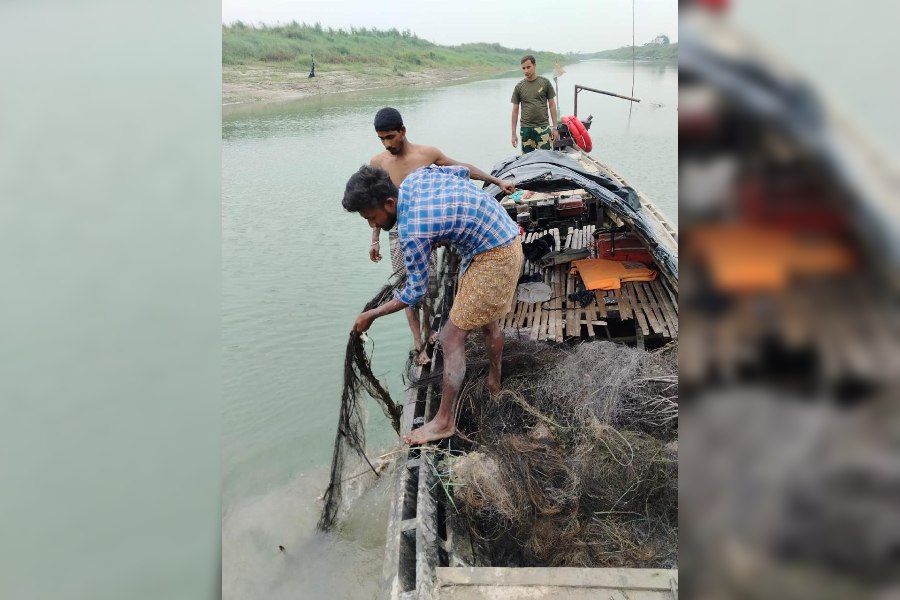The forest department has recovered 150kg of “ghost nets” from a tributary of the Padma in Murshidabad, where gharial babies died last month after being trapped in such nets discarded by fishermen.
At least two of the 37 gharial babies that were released in the tributary last February died within a week of the release, after being trapped in ghost nets that were abandoned by fishermen in the water long ago.
“After the incident, a massive clean-up drive was conducted and 150kg of such abandoned nets have been recovered from the stretch,” said Nilanjan Mallick, director of the Sunderban Biosphere Reserve.
“A team of experts from WWF is visiting the area regularly to keep track of the gharials.”
A forest department official said the WWF team had spotted some of the gharial babies on that stretch of the Padma tributary recently.
The drive to remove the ghost nets started on March 1 and covered a stretch of more than 15km both upstream and downstream from the site where the gharials were released. It continued till March 10.
“The removal is over. Now, the forest department is monitoring the stretch,” said a forest department official.
The combined monitoring of the gharials by the forest department and the WWF will be done five times every fortnight.
“During the first such monitoring, 14 gharial yearlings and one Gangetic dolphin were sighted,” said the forest official.
The gharials (Gavialis gangeticus) were artificially hatched in a zoo in Cooch Behar and were released in “no man’s land” in the tributary of the Padma in Murshidabad’s Jalangi, on the India-Bangladesh border, on February 24.
Experts said that not only gharials, Gangetic dolphins, too, get trapped in the ghost nets in many parts of Bengal.
“Ghost nets are the most common fishing nets used in the Ganges. The nets, because of their contrasting colour with the water, attract prized fish. The nets also attract dolphins, which are entangled once they come to feed on the fish. The fine mesh nets wrap the body and cause enormous physical distress for the dolphins, sometimes killing them,” said Basanta Kumar Das, director, ICAR-Central Inland Fisheries Research Institute, Barrackpore.
“There has never been a sustained campaign to fish the ghost nets out of the river. That is why there is very little knowledge of the number of such nets in our rivers,” a forester said.
In June 2020, pictures of a carcass of a Gangetic dolphin, being displayed like a trophy by a bunch of children in Howrah, gained a lot of traction on social media. The pictures showed the children posing with the carcass on a van and the road. The snout of the dolphin was entangled in a fishing net.
